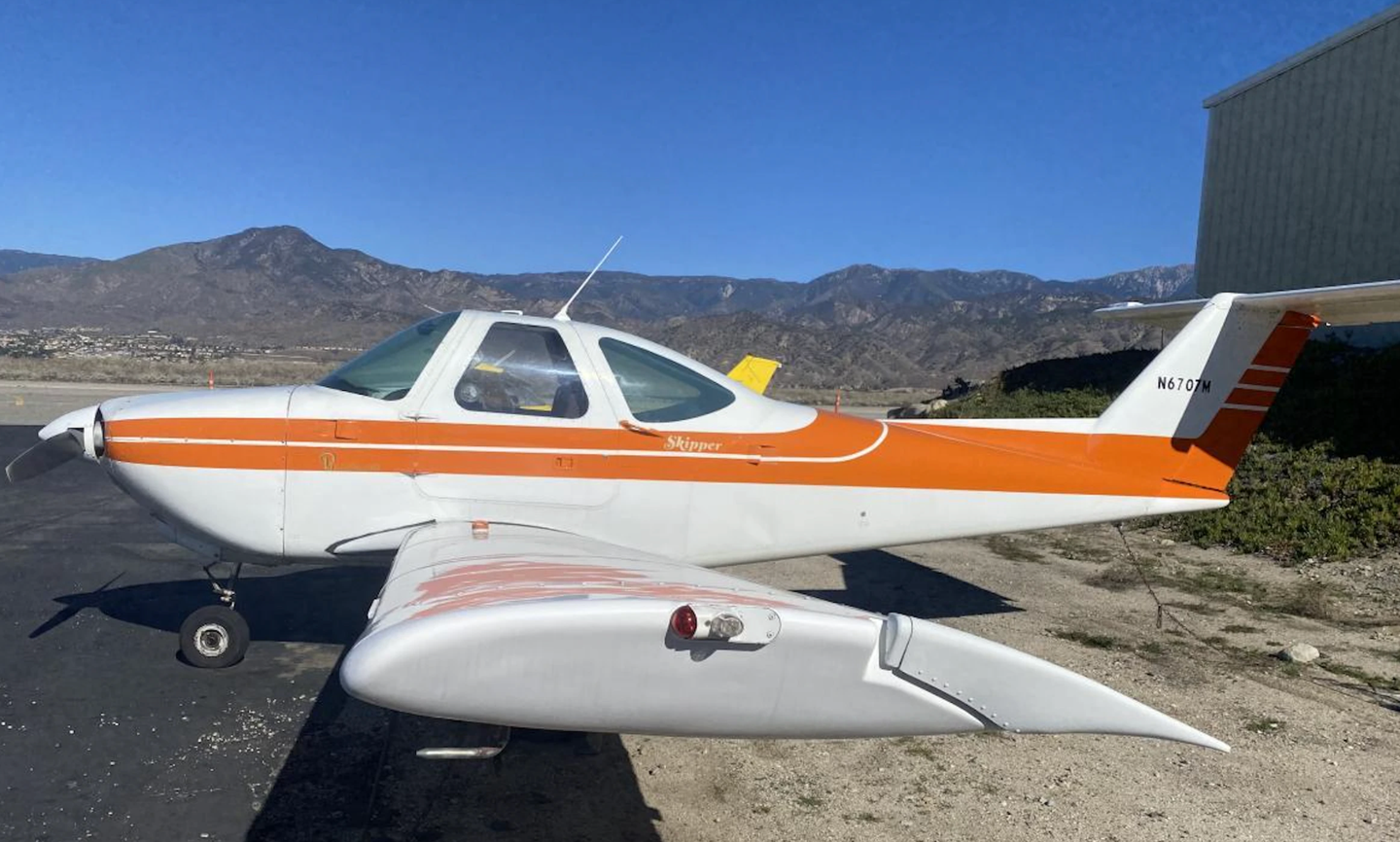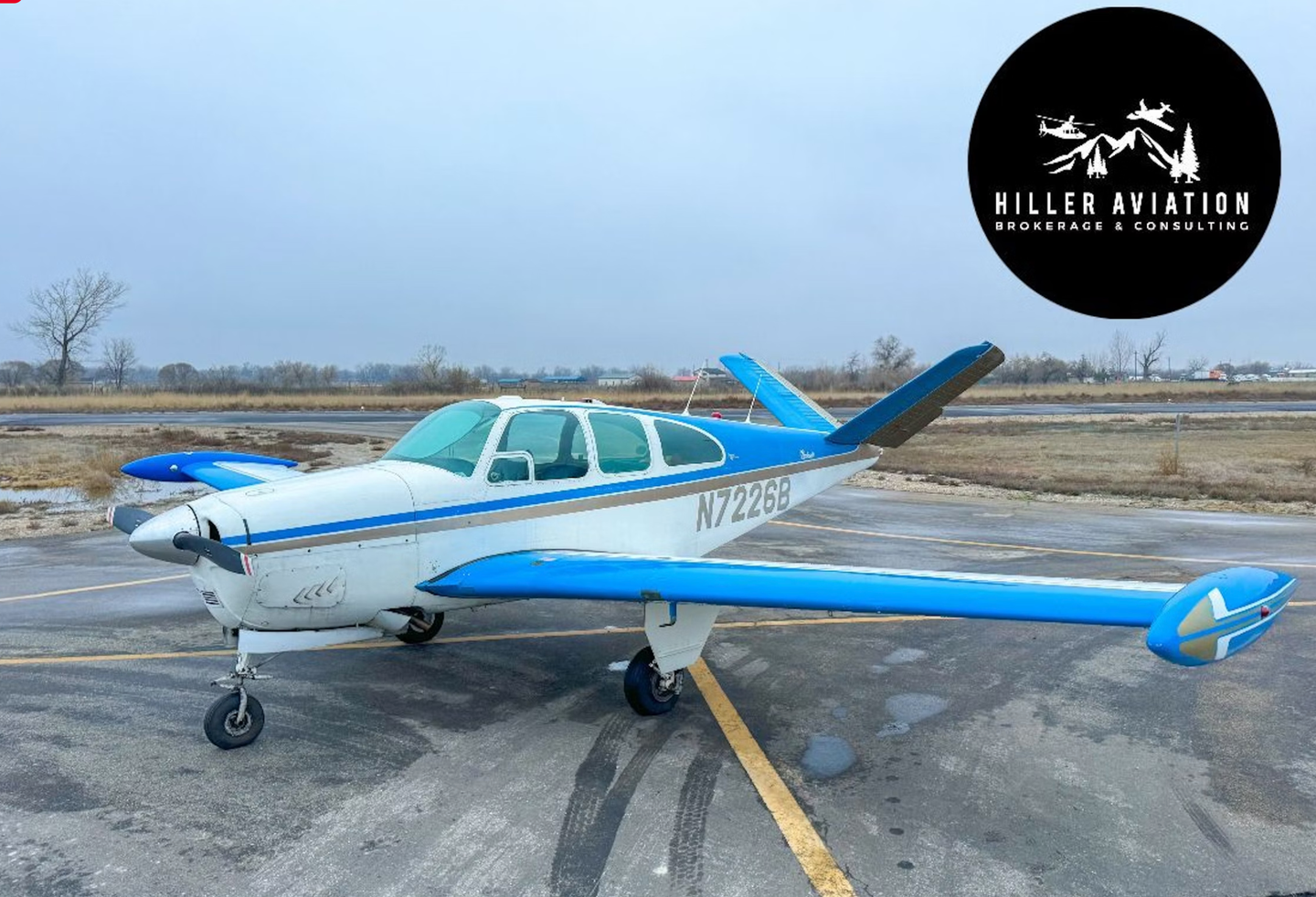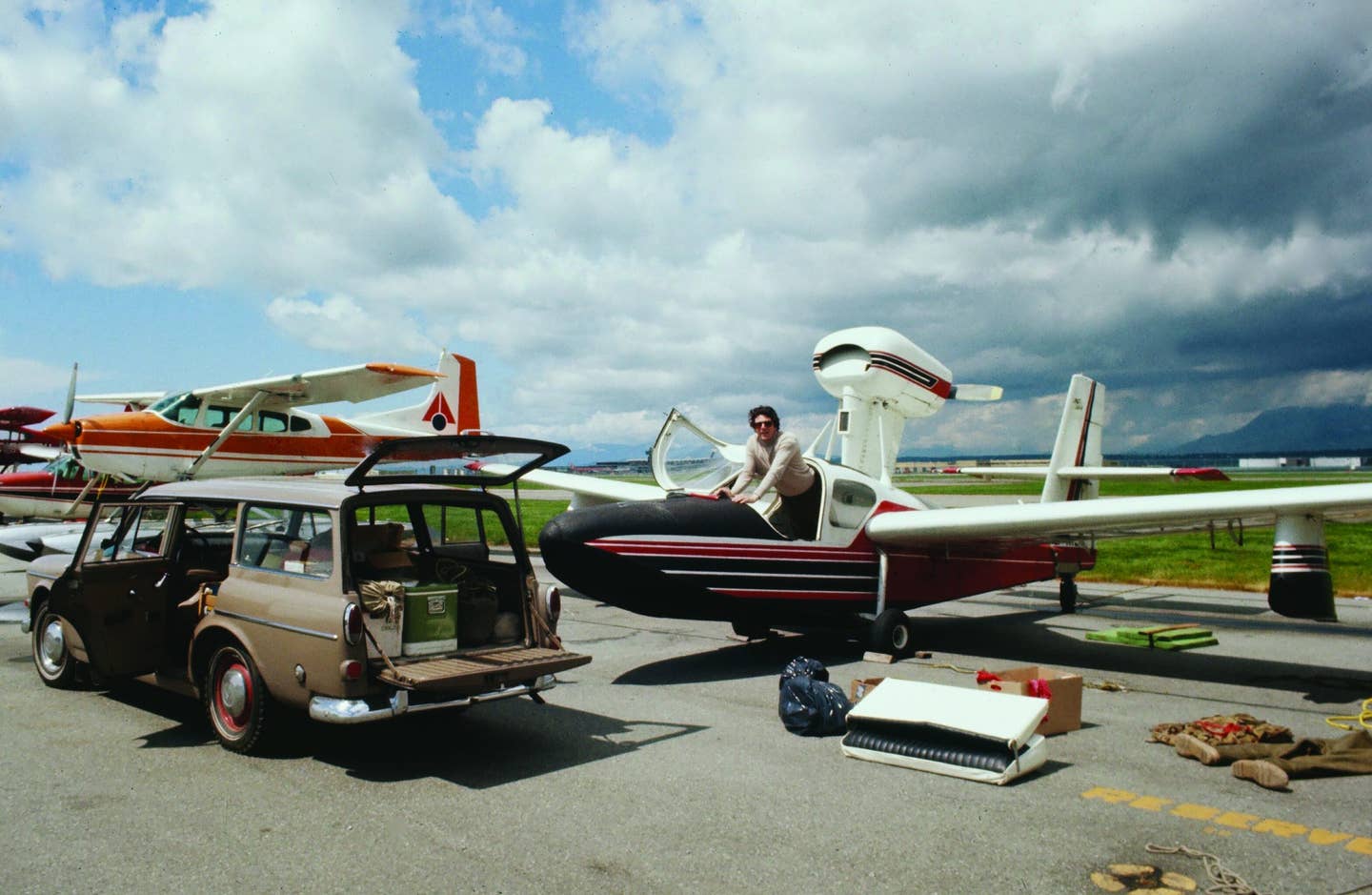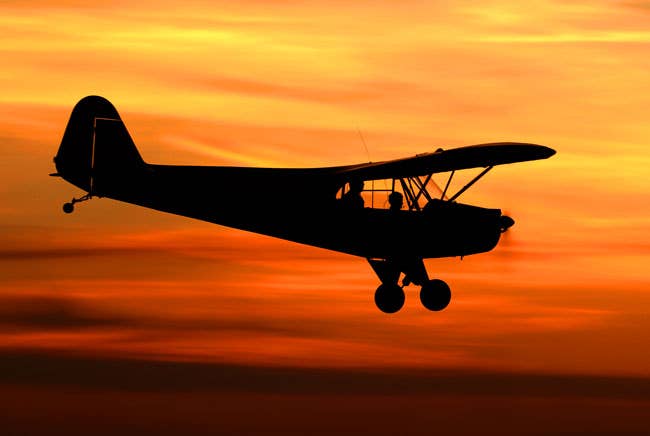Beechcraft Bonanza G36
Evolved and refined, the 2017 Bonanza has Garmin’s latest panel and so much more
Six seats. Big doors. Club seating. Retractable gear. Substantial feel. Metal construction. Those are the bullet points for the Beech G36 Bonanza, but if you stopped there, you'd be missing the point entirely. People who fly one of Beechcraft's planes, from Bonanza to King Air, know this already.
This is the 70th anniversary of the Bonanza, and it's a worthy milestone to mark. This is not lost on the folks at Textron Aviation---both Beech and Cessna are under the Textron Aviation umbrella, but the company has wisely left both names to their own storied brands. They mention the Bonanza as the longest continually produced model in aviation history, and they're right, in a way.
That first Beech Bonanza was the model 35, the V-tailed predecessor of the surviving Bonanza, the G36. That first Bonanza was a very different ship than today's model. While it was all-metal and had the same general profile as all Bonanzas and Barons to come, it was a four-seater, had a V-tail and was light, really light, weighing in at around 2,500 pounds max takeoff weight, more than 1,000 pounds lighter than today's model 36.
Beech built the last V-tailed Bonanza in the early '80s and since then has been building only straight-tailed models, the Model 33 Debonair (in later years called simply "Bonanza"), and starting in 1968 and continuing to today, the Model 36, a straight-tailed, stretched version of the Debonair that features a big, roomy rear seating area for four in addition to the pilot and right-seat occupant. Beech stopped production of the Model 33 in 1995, so for the past 20-something years, the Model 36 is the Bonanza.
My point being for all this history is that the Model 36 Bonanza was first delivered in 1968, so next year will be its 50th anniversary, a more fitting and accurate tribute to the plane, of which Beech has delivered nearly 4,000 models in that time. Still, if you consider the brand and the name Bonanza, well, that part of it is true. It has been 70 years since arguably the most important high-performance single of all time rolled out the factory doors and took to the skies, which Bonanzas are still doing today.
The Beechcraft Feel
Everything about the Beech Bonanza feels different after you've been flying more recently designed airplanes, like the G36'sWichita counterpart, the Cessna TTx. If the TTx is a racing machine---it is superfast---then the Bonanza is a luxury performance sedan---sporty, elegant and spacious all at once. And classy, too, it is, and not in the way people call silly shiny things "classy." The Bonanza is the real deal.
For decades, Beech has been a brand that pilots associated with speed, quality workmanship and comfort. At a time in aviation history when new designs, even fixed-gear ones, have gotten faster than the Bonanza, when their insurance costs are lower and their operation simpler, all while still somehow being exceptionally roomy, the Bonanza occupies a special niche in the market.
It's a plane for a pilot who wants a combination of more seats, classic construction, very solid speed and range, and the kind of heritage of style that stands alone in this market segment. It's not just a feel, either. There are numerous features that stand out in the Bonanza's construction, including the all-metal construction, the quality of interior materials (though its rivals have caught up with it in this regard), and the multiple little branding touches, emblems and signature logos here and there throughout the interior, that in any other plane might be seen as pretentious. Again, the Bonanza reminds me of a quote by Hollywood legend John Wayne, aka, the Duke (another Beech model, by the way): "No brag, just fact."
G36 Further Refined
As is or will be the case for every new airplane that features Garmin G1000, the Bonanza has the new NXi version of the avionics suite. Without making this another review of NXi, which we've flown in four different airplanes now, there are a number of features and strengths that bear a quick overview. The system comes standard with ADS-B Out and In, which you'd expect in a new airplane. NXi is much faster, brighter and cleaner than plain vanilla G1000, thanks to better hardware all around, so things like panning and zooming are pretty much instantaneous.
There's also a game-changing technology, the Vertical Situation Display (VSP), which shows your airplane's progress with a simple side view. While this is good for cruise flight, with terrain awareness built into just about every display, from iPhones on up, we should all have a very firm idea in mind at all times of our situation in relation to terrain. No, what the VSP does best is showing your progress along an approach, something IFR pilots have been dreaming up for many decades. This utility eliminates---or should---any uncertainty about where you are on the approach, so you don't fail to descend to an altitude and wind up too high and too close or, more importantly, so you don't descend prematurely and inadvertently fly into an obstacle, or the ground, neither of which is an acceptable answer when the controller asks, "How would you like the approach to terminate?"
In addition, there's comm frequency decoding, which shows you a text identifier of who you have in the active frequency, visual approaches for brew-your-own VFR arrivals at just about any airport, and optional wireless database and flight plan loading via the Garmin FlightStream 510 interface. There's a lot more, but suffice it to say that NXi is a huge upgrade to G1000. Is it reason enough to buy a new plane? In some cases, the answer is yes. Safety is everything.
The front seats of the G36 are accessed in very old-fashioned style with a single door on the passenger side, so you need to climb in and work your way over, which luckily isn't a difficult task. Once there, you'll be delighted at the bizjet level of fit and finish of the G36, which more than one aircraft sales rep has told me is a requirement with today's high-end buyers. After all, they have sky-high expectations when they purchase a $100,000 car. Why should they settle for less with their airplane?
With the addition of NXi, the front space of the Bonanza is remarkably high-tech, and the passenger section---there are, in this airplane, two distinct zones---has gotten a number of technology improvements, too, including USB ports, music jacks, LED lighting and great seats, upholstery and leather to combine for a high-end seating experience. As with the Baron, and really just about every club-seating six-seater ever, the best seats are the rear-facing ones, as you get a lot of headroom, a great deal more shoulder room, and the view out the big side windows of the world passing behind is hard to beat in a piston single.
And with the big double doors in back, passengers, even less than nimble ones, can board with ease and with the assistance of the pilot, if need be. You can also remove the rear seats and load cargo back there, but I'd be hesitant to throw my mountain bikes in back without very carefully protecting every inch of the leather and cloth upholstery.
Going Bonanza Flying
It was a broad, cloudless Texas day when I went flying with Textron Aviation's Lance Bartel from my home airport, San Marcos Municipal in Central Texas, just south of Austin and just north of San Antonio. It seemed like a perfect day to go flying, but it was getting hot by the time we were ready to hit the airwaves, and heat, as you know if you've studied weather even a little, is the prime engine of meteorological change.
If you've never flown a Bonanza---indeed, if you've never flown a Model 36 Bonanza---you're missing out. There's no one remarkable thing about the experience, yet somehow it winds up exceptional in the whole.
It starts even before you start the engine. The entry door has an unusual latching system; the door bottom slides on a metal rod until fully open, at which point the rod clicks into a detent, so the wind won't whip your door closed again as you're trying to get in. To close the door, you need to pull down on the rod, which releases it. You can tell when someone is familiar with Bonanzas (or Barons, which have the same mechanism) by witnessing them not having to figure out the mystery of closing the door. The door itself feels really solid, and the latching mechanism is equally beefy and positive. As I said, it's just one of the many little features that sets the Bonanza apart from other singles.
Once in and settled, I ran through the pre-start checks, progressing to the start itself. There's no key; the ignition switch is a round, metal, keyless switch that, again, is substantial and feels a bit like something from the Art Deco past. Love it.
Once we'd fired up the big IO-550, we started the air conditioner. It was early spring and, no, it wasn't just to test the system. We needed it. Like the TTx, the Bonanza features a set-it-and-forget-it environmental control system. Just dial in your desired temperature in the digital controller just below the power quadrant and you're good to go. I set it at 60 degrees and hoped that it would cool things down quickly. To my surprise, it actually did.
I got a taxi clearance, released the brakes and headed out. Unlike many of its near competitors---there's really only one airplane in the Bonanza's distinct niche, the Piper Matrix---the Bonanza taxis via nosewheel steering. Interestingly, the first few years, the Bonanza 35 was a steer-by-brake plane. Once you start the plane, the nose lowers and the visibility out front is pretty good. The seat isn't adjustable up and down, so for shorter pilots, it's a good idea to bring a bolster for better views over the top of the panel. Otherwise, the seat is nicely configurable, with recline and lumbar support.
As I got cleared for takeoff and rolled into position, I thought (briefly, of course) about the power quadrant, too, with its sturdy, prominent levers, thought about them because I was pushing them all forward as we powered for takeoff. We were taking off on Runway 26 at San Marcos, and the controller asked us if we could accept an intersection takeoff with more than 4,000 feet of runway to use, and while I'm normally not a fan of intersection departures, in this case, requesting full length would have meant a long back taxi on a busy day, which would make nobody happy. And even with the noontime heat, we needed much less than half of the available runway to get off the ground.
As soon as you start to rotate, it's clear that the G36 has a control feel as substantial as its pedigree. Hand flying the plane requires a more businesslike approach to the act than some other popular high-performance singles. Control forces, even at slower speeds, are noticeably higher than, say, in a Cirrus SR22, but the control harmony is exquisite. You learn to use the elevator trim as you maneuver to lighten those loads, which is just good flying practice, but unlike some other planes with forces light enough to get away with some sloppy trim technique, the G36 politely requests your full attention. What you get in return is a ride that's hard to match in this segment---solid, smooth and positive. You can almost feel the Beechcraft wing as you maneuver, lending its own particular character to the endeavor.
One quirk, and this might just have been me, but I accidentally disconnected the autopilot not once but twice in the turbulence when my thumb bumped the trim switch. It was easy enough to re-engage it, but my technique clearly wasn't ideal. I'm sure I'd adjust my grip on the yoke to accommodate this quirk if I were to fly the G36 on a regular basis, but it was the only airplane I can recall that ever happening in, and it happened twice.
On climb, the Bonanza is, as in all things, a really strong but not extraordinary performer. We were relatively light, as is ever the case for these kinds of flights, and we saw initial rates of climb at just above sea level of nearly 1,000 fpm settling down to 700 fpm as we headed on our way up to a low-cruise altitude. Folks who've spent time flying the Cirrus SR22, with its prop and throttle controls combined in a single lever, will notice right away that the G36 has conventional power controls, with separate throttle, propeller and mixture controls---totally old school.
While we love the simplicity of the SR22's power management, keeping an eye on the power in the Bonanza is no great chore. There's the lean assist feature on the Garmin G1000 engine page to help the pilot adjust the mixture to either rich or lean of peak, and for quick reference for the climb, a helpful little blue dash recommends a fuel flow setting that makes the continuous leaning process in the climb a piece of cake.
The G36 is equipped with the normally aspirated Continental IO-550-B six-cylinder engine that puts out 300 horses while turning a three-bladed metal Hartzell constant-speed prop. As with any non-turbo-powered plane, the Bonanza cruises most comfortably at lower altitudes. Still, with a service ceiling of 18,500 feet, it does fine in the teens when the need arises to fly high, but most operators will stay low and take advantage of the plane's higher speeds at anywhere from 3,000 to 8,000 feet, where the IO-550-B still produces a high percentage of its rated power.
It was almost a perfect flying day, with the "almost" part being some worse than moderate turbulence once we got higher than about 5,500 feet. When we first hit it, we were climbing, and it was bad enough that we discussed calling off the flight and heading back to San Marcos. In the 15 seconds it took us to have that conversation, the turbulence subsided to actual steady, moderate bumps, and before long, as we climbed, settled down to light-moderate chop.
The G36 isn't as fast as its four-place fixed-gear near competitors, but it's plenty fast. At 6,500 feet, we were truing at better than 175 knots at 17.5 gallons per hour, which was our rich-of-peak fuel flow. Pulling back the power to an economy, lean-of-peak cruise setting, we were looking at better than 165 at a tidy 14 gph.
At lower fuel flow settings, the Bonanza can go for a good distance, around 920 nm with reserves. Another choice Beechcraft made for the G36 at some point was to offer it only with standard fuel, which is 74 gallons usable. While big range numbers are sexy, when you think about it, the endurance number is the more important one. At 165 knots, it takes around five and a half hours to cover that distance, and in my experience, that's plenty long for any single leg. I'm guessing at some point Beechcraft engineers and designers came to the same conclusion.
One thing nice about retractable gear, besides it feeling like you're really flying a complex, high-performance airplane, is that the gear is a great speed brake or really three separate speed brakes with a single lever. Descending at 1,000 feet per minute or even faster is easy, and having a manual prop control gives the pilot another tool to slow things down for descent and approach to landing. It's also a great way to establish the three-degree rate of descent after intercepting the glideslope on an ILS or WAAS approach with vertical guidance. And that's not to mention the very effective flaps. With so many tools from which to choose, speed control in the G36, while not automatic, kind of feels that way.
Heading back into San Marcos, I hand flew the RNAV approach to Runway 26 and despite the slightly gusty conditions, it was a no-brainer. There's probably a reason why you never hear stories of all the trials and tribulations of landing a 36 Bonanza. The plane is easy to land, probably because it combines the best landing traits of any light plane: great visibility, smooth handling, a low wing for smoothing out the flare and just the right amount of wing loading to give the pilot a great shot at making most touchdowns straightforward affairs. I could so get used to this kind of landing behavior.
Even though the G36 Bonanza is a six-seater, its price point, just over $800,000, is competitive with the four-place Cirrus SR22 and the Bonanza's cross-town cousin, the speedy Cessna TTx. At that asking price, a buyer would expect a premium product, one with top-notch performance, great creature comforts, high-quality design, both inside and out, and a pedigree that's arguably the best in the business. In just about every one of these areas, the Bonanza doesn't deliver; it over-delivers.
2017 Beechcraft Bonanza G36
The airplane we flew for this report was an early model production Bonanza G36 outfitted with the Garmin G1000 NXi flat-panel avionics suite with redundant dual-color displays, Garmin GFC 700 integrated autopilot, dual ADAHRS, standard ADS-B In and Out, enhanced digital HSI, Vertical Situation Display, Visual Approach capability, Surface Watch ground operations utility, SiriusXM Weather and much more.
Price As Typically Equipped: $850,000
Base Price: $805,000
Check out the G36 Bonanza and other fantastic single-engine airplanes in our latest Piston Singles Buyer's Guide.
Want more first-hand accounts of flight tests on new and used general aviation aircraft? Check out our Pilot Reports Archive.

Subscribe to Our Newsletter
Get the latest Plane & Pilot Magazine stories delivered directly to your inbox






